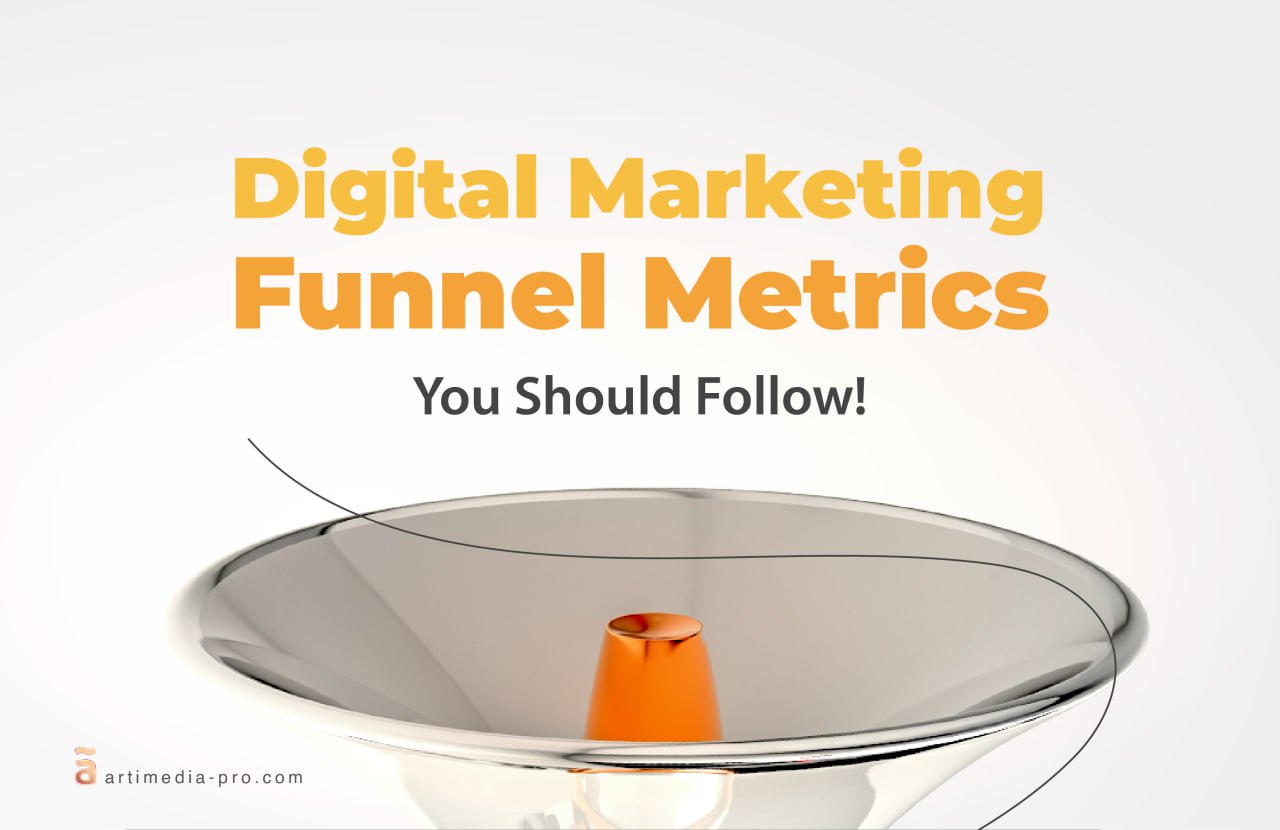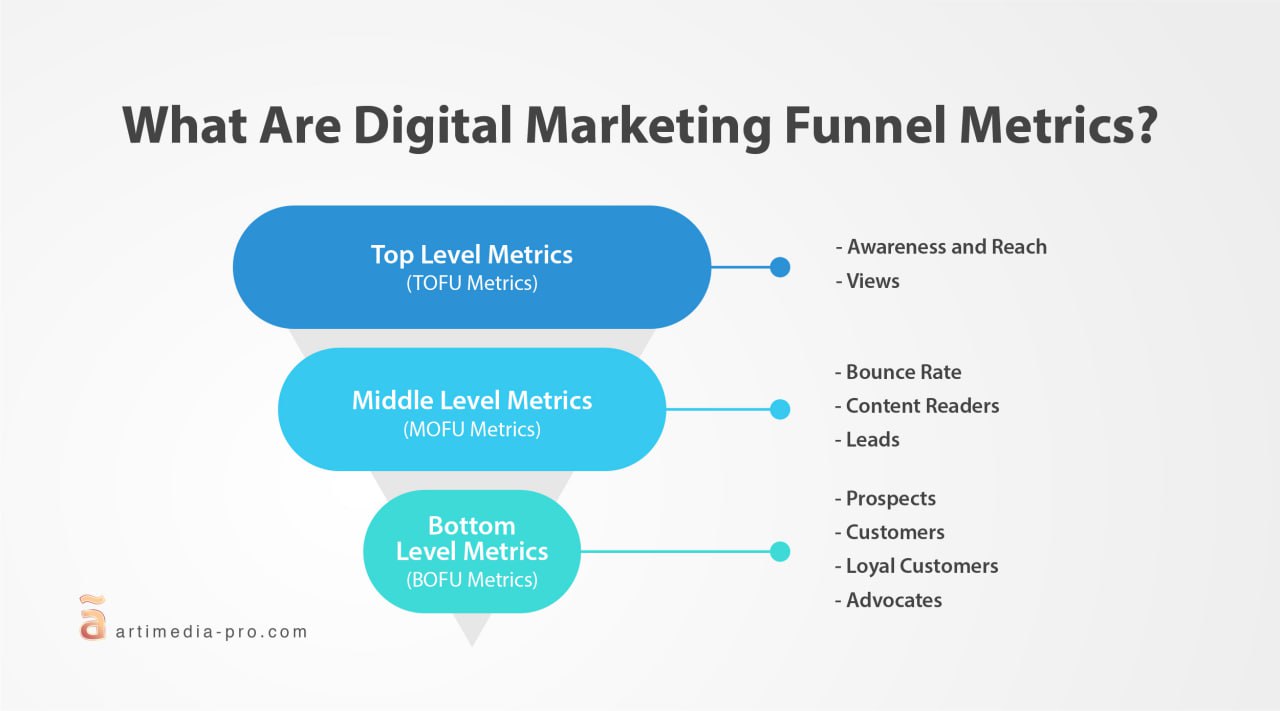Table of Contents
You’ve built a digital marketing funnel, guiding customers from awareness to conversion. But how do you know if it’s actually working? Simply having a funnel isn’t enough; you need to measure its performance. This is where digital marketing funnel metrics come in, providing the data-driven insights necessary to optimize your strategy, fix leaks, and maximize your return on investment.
What Are Digital Marketing Funnel Metrics?
Digital marketing funnel metrics are specific key performance indicators (KPIs) used to track and measure a customer’s progression through each stage of the marketing funnel. These numbers tell you how effectively you are attracting an audience, nurturing them into leads, and converting them into customers. Without tracking these metrics, you are essentially marketing in the dark.
By analyzing these KPIs, you can identify which parts of your strategy are succeeding and which are failing. For example, if you have high traffic but low lead generation, metrics will pinpoint a problem in the middle of your funnel. These insights allow you to make informed decisions to improve performance and drive sustainable growth for your business.
Here are some key marketing KPIs you should track:
- Website Traffic: Measure the number of visitors to your website to assess overall reach and visibility.
- Conversion Rate: Track the percentage of users who take desired actions, such as filling out forms or making purchases.
- Cost Per Lead (CPL): Analyze how much you are spending to acquire a single lead.
- Customer Acquisition Cost (CAC): Identify the total cost involved in gaining a new customer, including marketing and sales expenses.
- Return on Investment (ROI): Evaluate the profitability of your marketing campaigns by comparing the returns to the investments.
- Email Open and Click-Through Rates: Monitor the engagement levels of your email campaigns.
- Social Media Engagement: Measure likes, shares, comments, and overall interaction on social platforms.
- Customer Lifetime Value (CLV): Understand the total revenue your business can expect from a single customer.
- Bounce Rate: Track the percentage of visitors leaving your website after viewing only one page.
- Lead-to-Customer Ratio: Assess how effectively your leads are converting into paying customers.
Tracking these metrics ensures you stay informed about each stage of your marketing funnel, driving improved strategies and measurable results.
Why Funnel Metrics Are Essential to Marketing
Funnel metrics are the backbone of any successful marketing strategy. They transform marketing from a guessing game into a predictable science. By tracking performance at each stage, you gain a clear understanding of your customer acquisition cost (CAC) and customer lifetime value (LTV), two of the most critical numbers for any business.
These metrics provide a diagnostic tool for your entire marketing operation. They reveal bottlenecks, show where prospects are dropping off, and highlight your most profitable channels. This data empowers you to allocate your budget more effectively, focusing resources on what works and cutting what doesn’t. Ultimately, marketing funnel metrics are essential for proving ROI and scaling your business efficiently.
Key Metrics for Each Funnel Stage
To get a complete picture, you need to track specific metrics at every stage of the funnel: Top of Funnel (ToFu), Middle of Funnel (MoFu), and Bottom of Funnel (BoFu).
Top of Funnel (ToFu) Metrics
At the top of the funnel, your goal is awareness. You want to attract as many relevant people as possible. Important ToFu metrics include:
- Reach and Impressions: How many unique users saw your content and how many times it was displayed.
- Website Traffic: The total number of visitors coming to your site from various channels like organic search, social media, and paid ads.
- Social Media Engagement: This includes likes, shares, comments, and follower growth. These are key social media marketing funnel metrics that show your content is resonating.
- Click-Through Rate (CTR): The percentage of people who click your ad or link after seeing it.
Middle of Funnel (MoFu) Metrics
In the middle, you focus on nurturing leads and building relationships. Key metrics here are:
- Lead Generation: The number of new contacts captured, often through forms for e-books, webinars, or newsletters.
- Landing Page Conversion Rates: The percentage of visitors who take the desired action on your landing pages. A study shows the average landing page conversion rate across industries is around 2.35%, but top performers can see rates much higher.
- Email Open and Click Rates: These show how engaged your subscribers are with your nurturing content.
Bottom of Funnel (BoFu) Metrics
At the bottom, the focus is on conversion. You want to turn leads into customers. Critical metrics include:
- Conversion Rate: The percentage of leads who become paying customers. This is one of the most important marketing funnel metrics.
- Customer Acquisition Cost (CAC): The total cost of sales and marketing efforts required to acquire a new customer.
- Return on Ad Spend (ROAS): The amount of revenue generated for every dollar spent on advertising.
How to Use Funnel Metrics in Product Marketing
In product marketing, funnel metrics are invaluable for understanding how customers interact with your product from discovery to purchase and beyond. By analyzing user behavior at each stage, product marketers can identify opportunities to improve the user experience and drive adoption. For example, high drop-off rates during a free trial sign-up process indicate friction that needs to be addressed.
These metrics also inform product messaging and positioning. If certain features are highlighted in content that generates high engagement and conversions, it’s a clear signal that those features resonate with the target audience. This data allows product marketers to refine their value proposition and create campaigns that speak directly to customer needs, ultimately boosting sales and retention.
What Tools Measure Brand Metrics Along the Marketing Funnel?
There isn’t a single tool that covers every aspect of brand metrics across the marketing funnel, but using a combination of platforms can provide a comprehensive picture. Here’s a breakdown of key tools and how they help at different stages:
Website Traffic and User Behavior
- Google Analytics: A foundational tool for tracking website performance. It provides insights into traffic sources, user behavior, bounce rates, and conversion goals, helping you see how users move through your website.
- Hotjar: Offers visual insights like heatmaps, session recordings, and user feedback to understand how visitors interact with your site.
- Adobe Analytics: An alternative to Google Analytics, providing advanced reporting and data visualization for larger enterprises.
Social Media Metrics
- Meta Business Suite: Tracks engagement, reach, impressions, and conversions for ads and posts on Facebook and Instagram.
- LinkedIn Analytics: Provides data on post engagement, follower demographics, and performance of sponsored content for professional audiences.
- Hootsuite or Sprout Social: Aggregates data across multiple social media platforms for easier management and reporting.
- TikTok Analytics: Tracks audience insights, video performance, and engagement metrics specifically for TikTok campaigns.
Email Marketing Performance
- Mailchimp: Tracks open rates, click-through rates, and campaign performance, with tools for A/B testing and audience segmentation.
- HubSpot: Offers detailed email analytics as part of its CRM, integrating email data with broader marketing and sales insights.
- Constant Contact: Another email marketing tool with easy-to-use analytics for campaign tracking.
Paid Advertising Performance
- Google Ads: Offers in-depth metrics on ad performance, including impressions, clicks, conversion rates, and cost-per-click.
- Facebook Ads Manager: Tracks the performance of paid social campaigns, including audience reach and ROI.
- SEMRush or Ahrefs: Excellent for tracking paid search campaigns and keyword performance.
Centralized Reporting and Dashboards
- HubSpot CRM: Combines data from website traffic, email campaigns, social media, and more into one centralized dashboard for a complete view of the funnel.
- Tableau: A powerful visualization tool that can pull data from multiple sources to create custom reports and dashboards.
- Google Data Studio: Free tool to build custom reports by integrating data from Google Analytics, Ads, and other platforms.
- Klipfolio: A paid tool for creating live, interactive dashboards by pulling data from various marketing and analytics tools.
Using these tools together ensures that you’re capturing brand metrics comprehensively at every stage of the marketing funnel—from awareness to conversion and beyond.
FAQs about marketing funnel metrics
What are the most important marketing funnel metrics?
While it depends on your goals, Customer Acquisition Cost (CAC), Conversion Rate, and Customer Lifetime Value (LTV) are three of the most critical metrics. They provide a clear picture of your marketing profitability and business health.
How often should I check my funnel metrics?
For active campaigns, checking metrics weekly is a good practice to spot trends and make timely adjustments. A more comprehensive monthly review is ideal for analyzing overall performance and refining your long-term strategy.
What are ToFu metrics?
ToFu metrics, or Top of Funnel metrics, measure the effectiveness of your brand awareness efforts. Key examples include website traffic, reach, impressions, and social media engagement. They tell you how well you are attracting a new audience.
Can I track social media marketing funnel metrics easily?
Yes. All major social media platforms have built-in analytics dashboards that make it easy to track engagement, reach, clicks, and follower growth. For more advanced tracking, you can use third-party social media management tools.
Turn Metrics into Momentum
Understanding your digital marketing funnel metrics is the key to unlocking scalable growth. By tracking the right numbers at each stage, you can move beyond guesswork and build a predictable engine for attracting, converting, and retaining customers. Data gives you the power to optimize your strategy, maximize your budget, and achieve your business objectives.
If you’re ready to dive into your data but need a guide, artiMedia Pro is here to help. Our team of experts specializes in analyzing marketing funnel metrics to create powerful strategies for businesses in the MENA region. Contact us today to learn how we can turn your data into tangible results.




